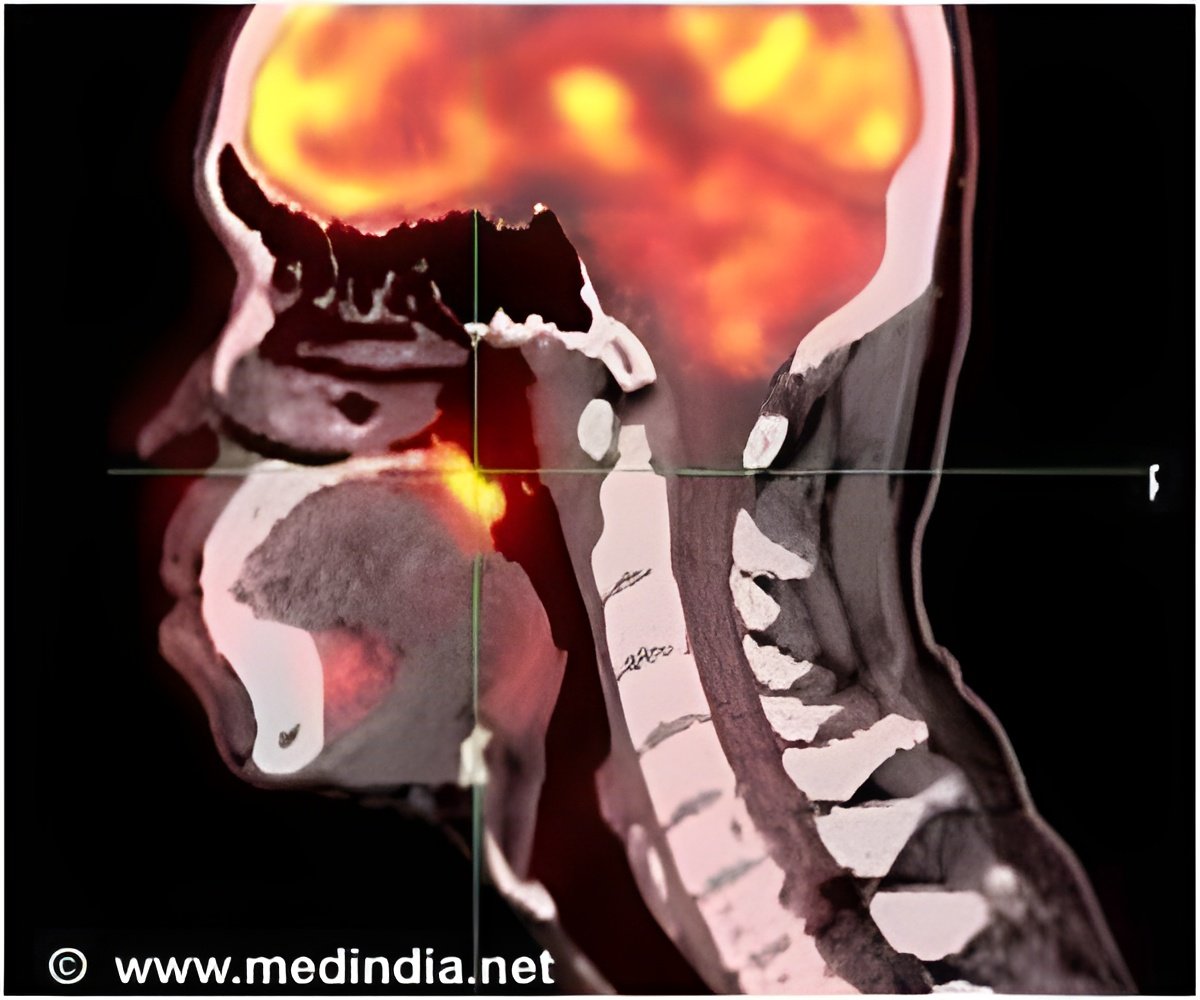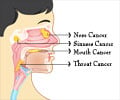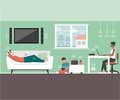HPV-positive disease is more responsive to radiation therapy and chemotherapy and is associated with significantly higher cure rates.

‘After an exposure to induction chemotherapy, lower doses of radiation can work effectively in those with head and neck cancers.’





Patients who responded well to induction chemotherapy and subsequently received the lower-dose treatment experienced excellent survival--92 percent were without evidence of recurrence two years after treatment--and had improved functional outcomes with fewer side effects, compared to those who received standard chemoradiation therapy. Compared with HPV, negative head and neck cancer, which typically is caused by smoking and alcohol consumption, HPV-positive disease is more responsive to radiation therapy and chemotherapy and is associated with significantly higher cure rates.
"Head and neck tumors that are caused by HPV respond well to therapy and can be cured reliably," said Tanguy Seiwert, MD, lead author of the study and an assistant professor of medicine at the University of Chicago Medicine.
"In fact, the effectiveness of combined treatment with radiation and chemotherapy has been so well documented that newer studies such as OPTIMA are focused on selecting patients who can safely receive less treatment."
Although reducing the intensity of cancer treatment offers patients potentially better quality of life, clinicians are careful to use this approach only for patients with a favorable biology for lower-dose therapy. The OPTIMA trial examined the response to induction chemotherapy--which is systemic therapy given prior to radiation therapy--as a method to select patients likely to benefit from reduced treatment.
Advertisement
"This degree of de-escalation with high-risk patients is novel, as is selection using induction as the key component to reducing radiation doses and subsequent toxicities to such low levels. In my opinion, treatment for HPV-positive disease should be de-escalated when possible, and induction is an ideal method to identify HPV-related head and neck cancer biology."
Advertisement
All patients in the trial received three cycles of induction chemotherapy consisting of carboplatin and nab-paclitaxel, and those who responded well received one of two de-escalated treatment regimens: 50 Gray (Gy) of radiation therapy alone (RT50 arm) for low-risk disease, or 45Gy of chemoradiation therapy (CRT45 arm) for high-risk disease.
Favorable response to induction chemotherapy was defined as 50 percent or greater reduction in tumor size for high-risk patients and 30 percent or greater reduction for low-risk patients. Patients without a favorable response received regular-dose chemoradiation therapy to 75 Gy.
Radiation therapy was delivered over five weeks of 2 Gy daily fractions on the RT50 arm. On the CRT45 and CRT75 arms, treatment consisted of paclitaxel, 5-fluorouracil and hydroxyurea systemic therapy with 1.5 Gy twice-daily radiation every other week. Median follow-up for the study was 22.3 months (range 9-39 months).
All low-risk patients and 32 of the 34 (94%) of the high-risk patients were progression-free at two years following treatment. Two-year overall survival rates were 100 percent for low-risk patients and 97 percent for high-risk patients. One high-risk patient on the CRT45 arm experienced a local recurrence at 11 months following treatment, but the recurrence was treated with salvage surgery.
Side effects from de-escalated therapy were significantly improved compared to standard treatment. Rates of grade 3 or higher mucositis were 16 percent for RT50, 46 percent for CRT45 and 60 percent for CRT75 (p = 0.033).
No RT50 patients experienced grade three or higher dermatitis, and the rates were 21 percent for CRT45 and 30 percent for CRT75 (p = 0.056). No RT50 patients experienced long-term dependency on a feeding tube, and the rates were 3.5 percent for CRT45 and 9 percent for CRT75 (p < 0.0001).
Source-Eurekalert















